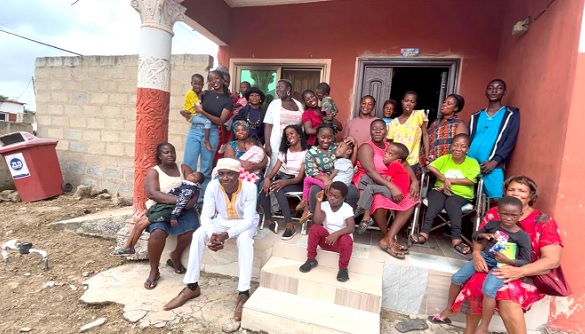
Inclusion, belonging for persons living with Cerebral Palsy
Every morning, as the sun gently peeks through the curtains, my sister greets the day with a warm smile, and glowing hope, despite her challenge.
Advertisement
With a bit of assistance, she rises from her bed, ready to take on the day.
She loves choosing her outfit for school, and with a little help putting on her shoes and zipping up, she feels a sense of accomplishment.
At breakfast, she confidently takes her spoon, relishing the joy of eating by herself without support while occasionally making some mess with her food that we all, as a family, cheerfully clean up together.
Her wit and humour sparkle, and she enjoys friendly banters with me (big sister) and the rest of the family, filling the household with laughter and love.
Despite her unique circumstances, she interacts with everyone just like any other person would.
Throughout the day, she tackles her studies with interest, often surprising teachers with her determination to learn and excel.
Even in the face of challenges, she embraces each moment, teaching people around her, both at school and home, valuable lessons about resilience and the beauty of cherishing life's little victories.
CP
Cerebral palsy, often referred to as CP, is a collection of conditions that impact a person’s movement, balance and posture.
It is the most prevalent motor disability experienced during childhood.
The term ‘cerebral’ relates to the brain, indicating that the inability involves challenges with parts of the brain’s functions.
‘Palsy’ points to weaknesses or difficulties in using the muscles.
As a result of my sister’s condition, I have devoted time to studying Cerebral Palsy at the age of 17.
CP comes in three main types, each with its unique characteristics.
‘Spastic CP’ is the most common type, affecting about 80 per cent of individuals living with CP.
People with this form experience increased muscle tone, making their muscles stiff and their movements somewhat difficult.
Next is the ‘Ataxic Cerebral Palsy’.
For those with ataxic CP, balance and coordination become challenging.
They might appear unsteady while walking or find it difficult to perform quick or precise movements, like writing.
Controlling their hands or arms when reaching for something can also be tough.
Lastly, there is the ‘Athetoid CP’, which results in involuntary muscle movements.
It is the second most common type and can cause individuals to struggle with controlling their body movements.
Each person living with cerebral palsy is unique, and these descriptions provide an overview of the different ways CP can manifest.
Despite these challenges, individuals with cerebral palsy have their own strengths and abilities, and they deserve understanding, respect and support to thrive in their daily lives.
Admire
Living with a sister with a CP, I have come to admire that they are special people and individuals who, like everyone else, deserve acceptance and compassion.
In my study of the condition, I was disappointed to find that there is no cure for CP currently, despite the advancement in science.
My sister is privileged to have a family that lends her hundred per cent support daily and goes to a special school that has a support system in place for her to thrive.
My desire to probe further into challenges with persons living with CP was intensified when my mum took my sister and I to visit less privileged children with the condition at a care home in Teshie, a suburb of Accra.
The owner of the home is a member of the Special Mothers Project, a group that creates awareness and provides support for cerebral palsy in Ghana.
The children at this care home have very limited support because their parents cannot afford the cost of sending them to special schools or equipment to provide aid to them.
Hope
There is hope for the future for persons living with CP, as researchers are continuously working on advancements that might further improve the lives of those with the condition.
Let us treat them like any other friend by inviting them to social activities and events.
Emotional support is incredibly important too – just being there to listen can mean a lot to them.
It is important to remember that individuals with cerebral palsy, just like us, are individuals with emotions and should be treated with love and care.
Since every child's situation is unique, there is no one-size-fits-all solution.
Thus, the Afrakoma Foundation seeks to bring experts, caregivers, parents of persons living with the condition, service providers and both health and education policymakers together on August 30, 2023, at the British Council Auditorium to deliberate on how we can support persons living with cerebral palsy.
If we commit and take action now, it will help many more living with cerebral palsy realise their dreams.
The writer is a high school student of Association International School.
Email :[email protected]



